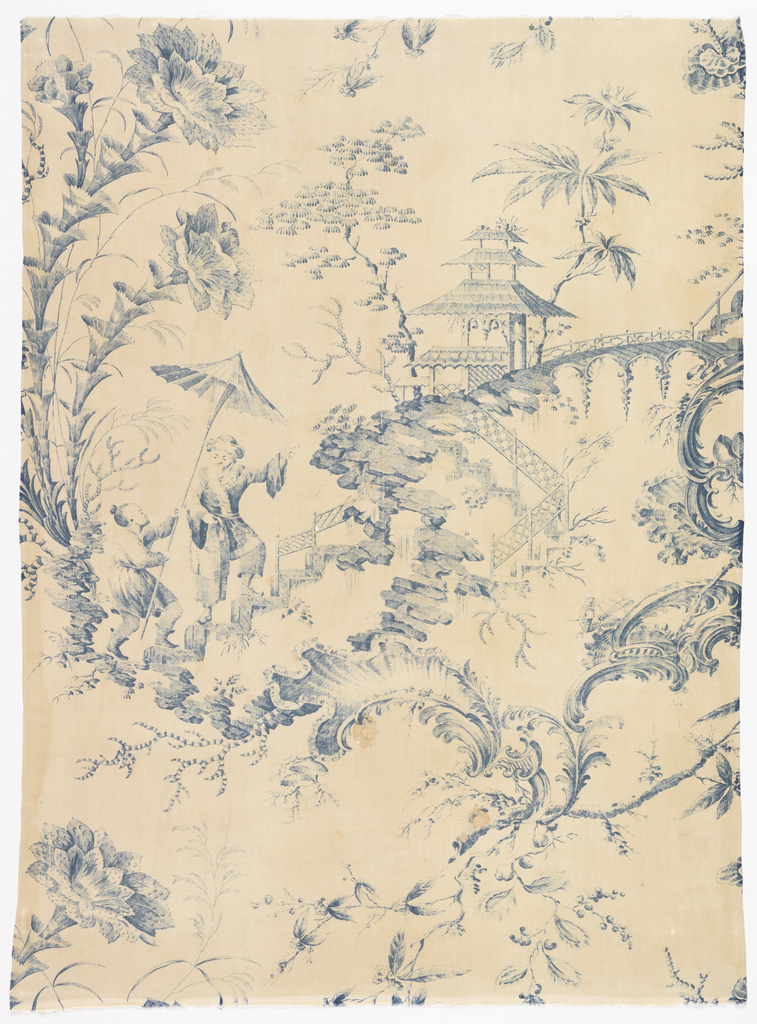This textile’s whimsical chinoiserie scene was inspired by the work of French artist Jean-Baptiste Pillement (1728 – 1808), and printed by Bromley Hall, a prominent textile printing manufactory in Middlesex, England. As discussed in a previous Object of the Day post, Pillement’s fanciful illustrations inspired myriad textile designs, especially in the late-eighteenth century. Although this design, called Chinese Figures, features many of the artist’s signatures – oversized flowers, a winding staircase and a fanciful pagoda – its specific design source is unknown. The pattern appears in a book of Bromley Hall patterns dating from 1760 to 1800, but three blue threads in the textile’s selvedge suggest a date between 1774 and 1811.
The textile was one of several eighteenth- and nineteenth-century printed textiles donated to the Cooper Hewitt, Smithsonian Design Museum by Mrs. William D. (Sarah Sagehorn) Frishmuth (1842 – 1926). An enthusiastic collector of textiles, musical instruments and early American artifacts, Mrs. Frishmuth served as Honorary Curator of the Department of Musical Instruments at the Pennsylvania Museum and School of Industrial Art (now the Philadelphia Museum of Art). Many of the Cooper Hewitt’s Frishmuth textiles are represented in the Philadelphia Museum’s collection as well. Also gifts of Mrs. Frishmuth, they include this Pillement-inspired fabric.
Laura L. Camerlengo is Exhibition Assistant in the department of Costume and Textiles at the Philadelphia Museum of Art. She is the author of the DesignFile e-book, The Miser’s Purse.
